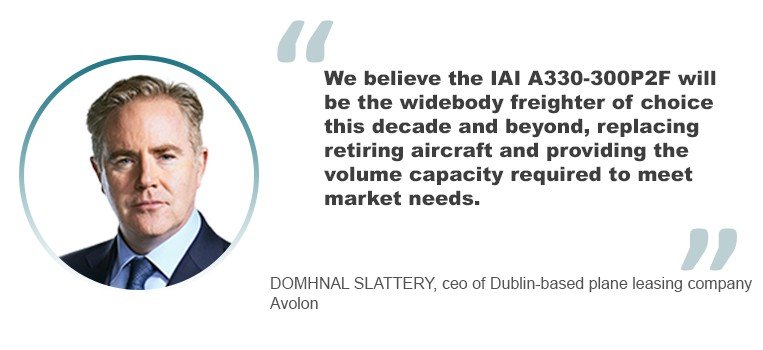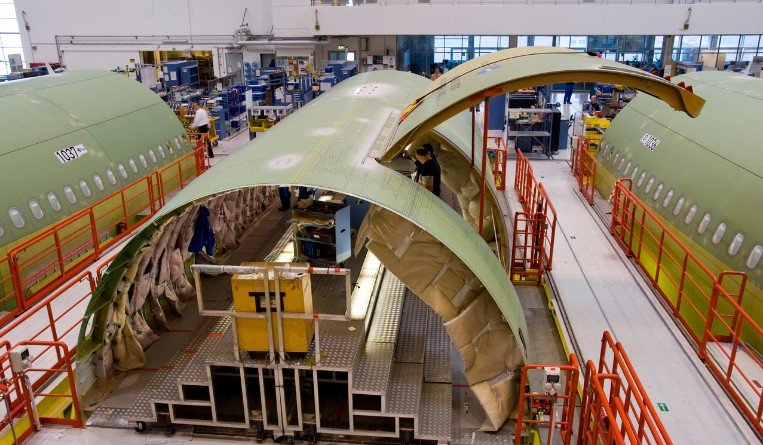After a bumpy start, the Airbus A330 freighter is poised to play a dominant role in the mid-sized freighter market, especially former passenger models of the A330 converted into the all-cargo configuration.
Israel Aerospace Industries (IAI) officially added the A330-300 to its passenger-to-freighter conversion program in October, joining Elbe Flugzeugwerke (EFW) as the second aerospace firm to turn A330s into cargo planes.
IAI launched its A330 program with an order from plane leasing firm Avolon for 30 A330 conversions. Avolon has more than 200 A330s on its books.
According to Avolon’s Dublin-based CEO Domhnal Slattery, the move is to “capitalize on the unparalleled growth in e-commerce.” It is his company’s first foray into the freighter market.
The A330 has had a slow start in the cargo arena. EFW, a joint venture between Airbus and Singapore-based ST Aerospace, delivered its first converted A330-200P2F in 2017, which went to DHL. Limited feedstock availability and a relatively high residual value of conversion candidates hobbled the programme. Another reason was that most carriers favoured converted Boeing 767 freighters, despite the A330s larger space for cargo. The A330 is cigar-shaped, which requires a mix of different ULDs to maximize payload on the main deck. Some pundits have labelled the aircraft a parcel freighter.
Even the production freighter version has struggled. Etihad parked its fleet of five A330 freighters at the beginning of 2018.
With greater feedstock availability and more straightforward contours, operators have gone primarily for 767s in the medium-sized freighter market, both for production freighters and conversions. Now, however, feedstock is thinning out, and as the 767 fades from the conversion market, the A330 is turning into the default choice for cargo planes in this segment.
“We believe the IAI A330-300P2F will be the widebody freighter of choice this decade and beyond, replacing retiring aircraft and providing the volume capacity required to meet market needs,” Slattery said.

Aircraft consultancy IBA agrees with this assessment. With 767-300 feedstock running out, the converted A330-200 and -300 freighters will be the predominant choice for express operators, the company predicts. By its estimate, the average conversion cost for an A330 is US$18.4 million.
There should be ample feedstock of A330s to keep conversion lines busy, with no shortage of planes to enter the process with little delay. In the middle of 2021, there were 245 A330-300s in storage, as well as 249 A330-200 models.
EFW has signalled that it plans to open conversion facilities for the plane in the United States and China next year. In the first 10 months of this year, it converted 12 A330s, with aims to complete 15 altogether this year. Management has signalled that it wants to raise capacity to 30 aircraft per year by 2024.
Companies that have so far concentrated on the 767 are now showing interest in the A330. Amazon, which entered the freighter market with 767s, is reportedly on the hunt for 10 A330-300s. Other e-commerce carriers are expected to be in the forefront of the scramble for A330 conversions.
Another company that has firmly been in the 767 camp is ACMI provider ATSG, one of the chief carriers for Amazon. In October, it signed an agreement with EFW for 20 A330 conversions, which are expected to be performed between mid-2023 and late 2025.
Avolon’s order is set to go through the conversion process from 2025 to 2028. According to EFW, its A330 conversion slots are almost all booked through 2026.
Ian Putzger



